White House requests proposals for regulating novel commercial space activities
Monday, 12 September 2022 09:40
The White House will ask federal agencies for their proposals for how to authorize and supervise emerging commercial space capabilities that don’t fit into current regulatory regimes.
The post White House requests proposals for regulating novel commercial space activities appeared first on SpaceNews.
Foust Forward | Manufacturing a low Earth orbit economy
Monday, 12 September 2022 09:30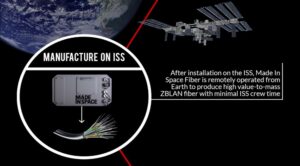
ZBLAN fiber is just the latest in a long line of products that had been touted as demonstrating the potential of space manufacturing, taking advantage of microgravity and vacuum conditions to create items that cannot be made as well, or at all, on Earth.
Solar Orbiter solves magnetic switchback mystery
Monday, 12 September 2022 07:00
With data from its closest pass of the Sun yet, the ESA/NASA Solar Orbiter spacecraft has found compelling clues as to the origin of magnetic switchbacks, and points towards how their physical formation mechanism might help accelerate the solar wind.
Solar switchback mystery solved
Monday, 12 September 2022 07:00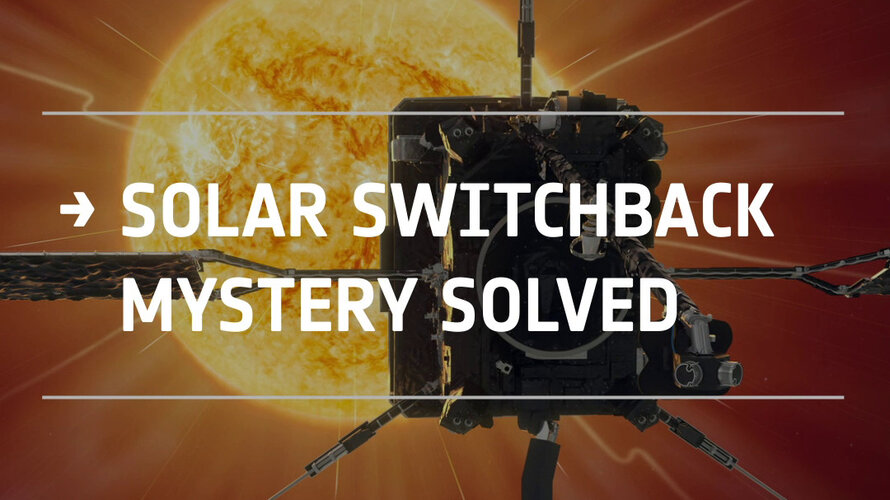 Video:
00:00:58
Video:
00:00:58
ESA’s Solar Orbiter has solved the mystery of a magnetic phenomenon in the solar wind. It has taken the first ever image of a ‘switchback’ in the solar corona, confirming its predicted ‘S’ shape. A switchback is defined by rapid flips in magnetic field direction. The observed switchback is linked to an active region associated with sunspots and magnetic activity where there is an interaction between open and closed magnetic field lines. The interaction releases energy and sends the S-shaped disturbance into space. The new data suggest that switchbacks could originate near the solar surface, and may
KT SAT orders Koreasat 6A communications satellite from Thales
Monday, 12 September 2022 05:58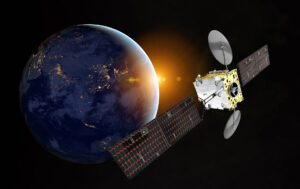
Thales Alenia Space said Sept. 17 it has signed a contract to deliver a communications satellite for South Korea’s KT SAT in the fourth quarter of 2024.
The post KT SAT orders Koreasat 6A communications satellite from Thales appeared first on SpaceNews.
Court approves sale of Masten assets to Astrobotic
Monday, 12 September 2022 02:54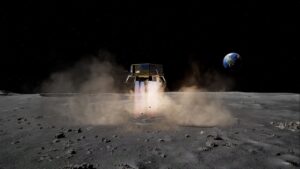
A federal bankruptcy court approved the sale of nearly all the assets of Masten Space Systems, a company developing a lunar lander for a NASA mission, to another lander developer, Astrobotic.
The post Court approves sale of Masten assets to Astrobotic appeared first on SpaceNews.
Interview with Luigi Pasquali, CEO of Telespazio
Sunday, 11 September 2022 23:04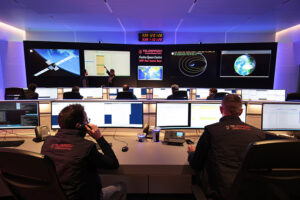
Interview with Luigi Pasquali, CEO of Telespazio
The post Interview with Luigi Pasquali, CEO of Telespazio appeared first on SpaceNews.
Could more of Earth's surface host life?
Sunday, 11 September 2022 11:20 Of all known planets, Earth is as friendly to life as any planet could possibly be - or is it? If Jupiter's orbit changes, a new study shows Earth could be more hospitable than it is today.
When a planet has a perfectly circular orbit around its star, the distance between the star and the planet never changes. Most planets, however, have "eccentric" orbits around their stars, meaning the o
Of all known planets, Earth is as friendly to life as any planet could possibly be - or is it? If Jupiter's orbit changes, a new study shows Earth could be more hospitable than it is today.
When a planet has a perfectly circular orbit around its star, the distance between the star and the planet never changes. Most planets, however, have "eccentric" orbits around their stars, meaning the o Chinese Gaofen satellites deployed for quake-hit Sichuan
Sunday, 11 September 2022 11:20 China has applied its Gaofen series satellites to help with relief work following a 6.8-magnitude earthquake in southwest China's Sichuan Province, according to the website of state broadcaster China Central Television (CCTV).
More than 10 satellites were deployed to capture images of the quake-hit areas 10 minutes after the earthquake jolted Sichuan's Luding County at 12:52 p.m. Monday, i
China has applied its Gaofen series satellites to help with relief work following a 6.8-magnitude earthquake in southwest China's Sichuan Province, according to the website of state broadcaster China Central Television (CCTV).
More than 10 satellites were deployed to capture images of the quake-hit areas 10 minutes after the earthquake jolted Sichuan's Luding County at 12:52 p.m. Monday, i Circalunar clocks: Using the right light
Sunday, 11 September 2022 11:20 How animals are able to interpret natural light sources to adjust their physiology and behaviour is poorly understood. The labs of Kristin Tessmar-Raible (Max Perutz Labs Vienna, Alfred Wegener Institut, University of Oldenburg) and Eva Wolf (Johannes Gutenberg University and Institute of Molecular Biology Mainz) have now revealed that a molecule called L-cryptochrome (L-Cry) has the biochemical
How animals are able to interpret natural light sources to adjust their physiology and behaviour is poorly understood. The labs of Kristin Tessmar-Raible (Max Perutz Labs Vienna, Alfred Wegener Institut, University of Oldenburg) and Eva Wolf (Johannes Gutenberg University and Institute of Molecular Biology Mainz) have now revealed that a molecule called L-cryptochrome (L-Cry) has the biochemical LeoLabs awarded contract from US Dept of Commerce to support space traffic management prototype
Sunday, 11 September 2022 09:52 LeoLabs, Inc., the world's leading commercial provider of low Earth orbit (LEO) mapping and Space Situational Awareness (SSA) services, has announced an award to provide data and services to the US Department of Commerce to support the development of a US civil- led Space Traffic Management (STM) system. The announcement was made at the 9th session of the National Space Council in Houston, Texas
LeoLabs, Inc., the world's leading commercial provider of low Earth orbit (LEO) mapping and Space Situational Awareness (SSA) services, has announced an award to provide data and services to the US Department of Commerce to support the development of a US civil- led Space Traffic Management (STM) system. The announcement was made at the 9th session of the National Space Council in Houston, Texas New mineral found by Chinese scientists
Sunday, 11 September 2022 09:52 Chinese scientists have achieved a remarkable new feat in their research of the moon as they have discovered and identified the sixth new lunar mineral.
The China National Space Administration and the China Atomic Energy Authority jointly announced in Beijing on Friday that the new mineral-Changesite-(Y)-was found by scientists at the Beijing Research Institute of Uranium Geology from surf
Chinese scientists have achieved a remarkable new feat in their research of the moon as they have discovered and identified the sixth new lunar mineral.
The China National Space Administration and the China Atomic Energy Authority jointly announced in Beijing on Friday that the new mineral-Changesite-(Y)-was found by scientists at the Beijing Research Institute of Uranium Geology from surf SpaceX launches 34 more Starlink satellites, AST SpaceMobile satellite
Sunday, 11 September 2022 09:52 Elon Musk's SpaceX launched 34 more Starlink satellites with AST SpaceMobile's BlueWalker 3 satellite to low-Earth orbit on Saturday.
The satellites were launched by a two-stage Falcon 9 rocket from Launch Complex 39A at Kennedy Space Center in Florida after targeting a 9:20 p.m. liftoff due to weather.
The first stage of the Falcon 9 rocket landed on the A Shortfall of Gravitas
Elon Musk's SpaceX launched 34 more Starlink satellites with AST SpaceMobile's BlueWalker 3 satellite to low-Earth orbit on Saturday.
The satellites were launched by a two-stage Falcon 9 rocket from Launch Complex 39A at Kennedy Space Center in Florida after targeting a 9:20 p.m. liftoff due to weather.
The first stage of the Falcon 9 rocket landed on the A Shortfall of Gravitas Could Ukraine become a strong ally ESA has been looking for
Sunday, 11 September 2022 09:52 The European Space Agency (ESA) said in June that it expects strong support from NASA after the European agency suspended its cooperation with Russia due to the Ukraine war.
"Administrator Bill Nelson has given us a clear message: NASA wants to help Europe in this situation," said ESA Director General Josef Aschbacher.
ESA wants to find a silver-bullet solution here and now to cover
The European Space Agency (ESA) said in June that it expects strong support from NASA after the European agency suspended its cooperation with Russia due to the Ukraine war.
"Administrator Bill Nelson has given us a clear message: NASA wants to help Europe in this situation," said ESA Director General Josef Aschbacher.
ESA wants to find a silver-bullet solution here and now to cover MEASAT signs multiyear Managed Bandwidth Services contract with Reach Ten
Sunday, 11 September 2022 09:52 MEASAT Global Berhad ("MEASAT") - Malaysia's premier satellite operator, has signed a multiyear contract with Reach Ten Communication Sdn Bhd ("Reach Ten") for Managed Bandwidth Services, supported by the high throughput satellite ("HTS") payload on MEASAT-3d ("M3d"). With this contract, Reach Ten will become the largest enterprise satellite service provider in Malaysia in terms of capacity prov
MEASAT Global Berhad ("MEASAT") - Malaysia's premier satellite operator, has signed a multiyear contract with Reach Ten Communication Sdn Bhd ("Reach Ten") for Managed Bandwidth Services, supported by the high throughput satellite ("HTS") payload on MEASAT-3d ("M3d"). With this contract, Reach Ten will become the largest enterprise satellite service provider in Malaysia in terms of capacity prov 